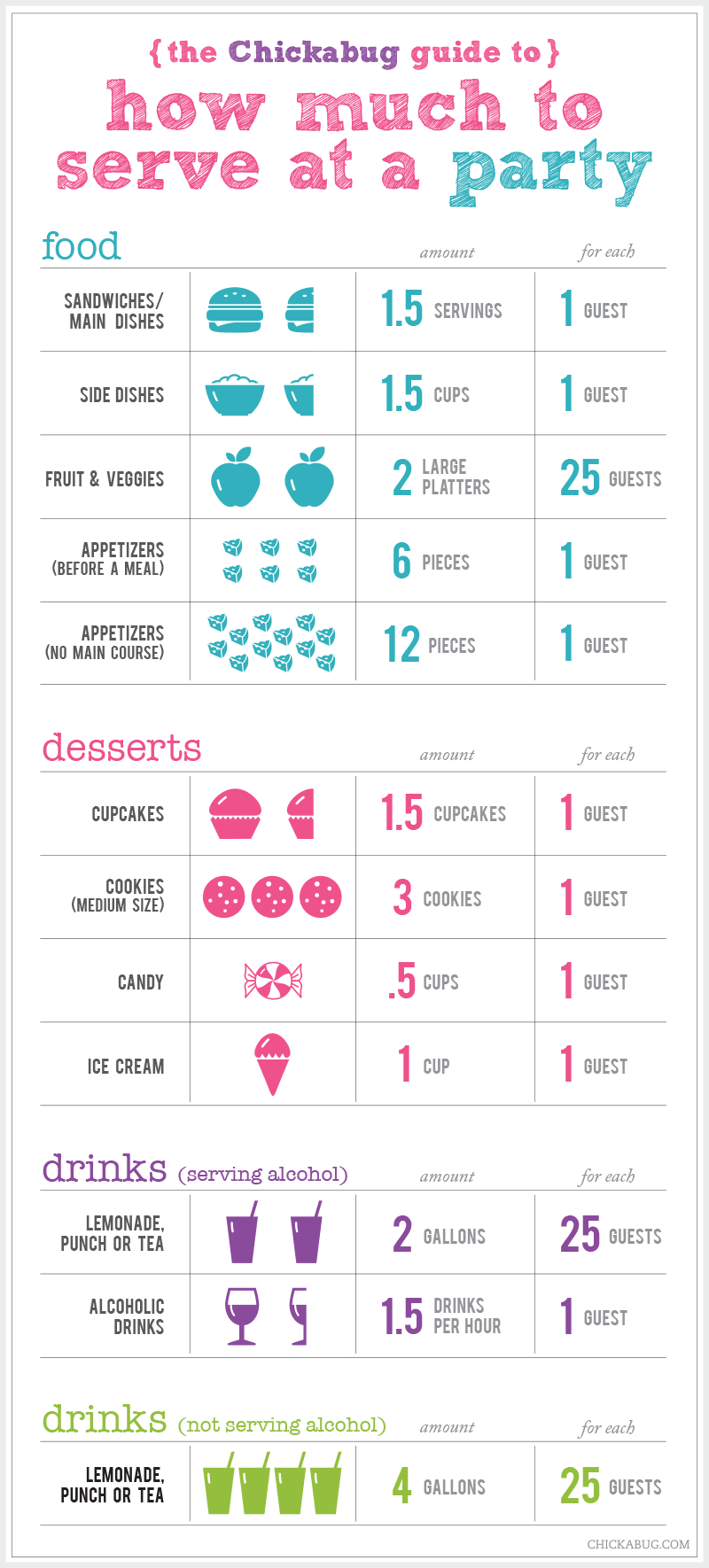Whether you are having a few friends over for dinner or throwing a full blown party for a holiday, one of the questions you will inevitably have to answer will be how much food and drinks to have for your guests.
There is nothing worse than having a party and running out of food…Ok, yes there can be worse but it’s pretty bad. Conversely, buying too much will leave you with lighter pockets and a fridge full of leftovers you probably won’t end up eating. So what is the magic equation for buying party food? Does one even exist? We think this chart created by Heather, who blogs at Chickabug, is pretty close to perfect.
Take a look:
 You may want to print this out and taped it on the inside of your spice cabinet. Never again will I have to guess how much to serve.
You may want to print this out and taped it on the inside of your spice cabinet. Never again will I have to guess how much to serve.













